Itinerary
If you look north of the cathedral (La Seu, or the seat of the bishopric, to Mallorcans) on a map of the city of Palma, you can see around the Plaça Santa Eulàlia a jumble of tiny streets that made up the earliest settlement. Farther out, a ring of wide boulevards traces the fortifications built by the Moors to defend the larger city that emerged by the 12th century. The zigzags mark the bastions that jutted out at regular intervals. By the end of the 19th century, most of the walls had been demolished; the only place where you can still see the massive defenses is at Ses Voltes, along the seafront west of the cathedral.A torrent (streambed) used to run through the middle of the old city, dry for most of the year but often a raging flood in the rainy season. In the 17th century it was diverted to the east, along the moat that ran outside the city walls. Two of Palma’s main arteries, La Rambla and the Passeig d’es Born, now follow the stream’s natural course. The traditional evening paseo (promenade) takes place on the Born.If you come to Palma by car, park in the garage beneath the Parc de la Mar (the ramp is just off the highway from the airport, as you reach the cathedral) and stroll along the park. Beside it run the huge bastions guarding the Almudaina Palace; the cathedral, golden and massive, rises beyond. Where you exit the garage, there’s a ceramic mural by the late Catalan artist and Mallorca resident Joan Miró, facing the cathedral across the pool that runs the length of the park.If you begin early enough, a walk along the ramparts at Ses Voltes from the mirador beside the cathedral is spectacular. The first rays of the sun turn the upper pinnacles of La Seu bright gold and then begin to work their way down the sandstone walls. From the Parc de la Mar, follow Avinguda Antoni Maura past the steps to the palace. Just below the Plaça de la Reina, where the Passeig d’es Born begins, turn left on Carrer de la Boteria into the Plaça de la Llotja (if the Llotja itself is open, don’t miss a chance to visit—it’s the Mediterranean’s finest Gothic-style civic building). From there stroll through the Plaça Drassana to the Museu d’Es Baluard, at the end of Carrer Sant Pere. Retrace your steps to Avinguda Antoni Maura. Walk up the Passeig d’es Born to Plaça Joan Carles I, then right on Avenida de La Unió.
Hedonistic and historic, Eivissa (Ibiza, in Castilian) is a city jam-packed with cafés, nightspots, and trendy shops; looming over it are the massive stone walls of Dalt Vila —the medieval city declared a UNESCO World Heritage site in 1999—and its Gothic cathedral. Squeezed between the north walls of the old city and the harbor is Sa Penya, a long labyrinth of stone-paved streets that offer some of the city’s best offbeat shopping, snacking, and exploring. The tourist information office on Vara de Rey has a useful map of walks through the old city.
A Mediterranean city and naval station located in the Region of Murcia, southeastern Spain, Cartagena’s sheltered bay has attracted sailors for centuries. The Carthaginians founded the city in 223BC and named it Cartago Nova; it later became a prosperous Roman colony, and a Byzantine trading centre. The city has been the main Spanish Mediterranean naval base since the reign of King Philip II, and is still surrounded by walls built during this period. Cartagena’s importance grew with the arrival of the Spanish Bourbons in the 18th century, when the Navidad Fortress was constructed to protect the harbour. In recent years, traces of the city’s fascinating past have been brought to light: a well-preserved Roman Theatre was discovered in 1988, and this has now been restored and opened to the public. During your free time, you may like to take a mini-cruise around Cartagena’s historic harbour: these operate several times a day, take approximately 40 minutes and do not need to be booked in advance. Full details will be available at the port.
As you sail into Malaga you will notice what an idyllic setting the city enjoys on the famous Costa del Sol. To the east of this provincial capital, the coast along the region of La Axarqua is scattered with villages, farmland and sleepy fishing hamlets – the epitome of traditional rural Spain. To the west stretches a continuous city where the razzmatazz and bustle creates a colourful contrast that is easily recognisable as the Costa del Sol. Surrounding the region, the Penibéetica Mountains provide an attractive backdrop overlooking the lower terraced slopes which yield olives and almonds. This spectacular mountain chain shelters the province from cold northerly winds, giving it a reputation as a therapeutic and exotic place in which to escape from cold northern climes. Malaga is also the gateway to many of Andalusia’s enchanting historic villages, towns and cities.
Believed to be the oldest town on the Iberian Peninsula, the Andalusian port of Cádiz enjoys a stunning location at the edge of a six-mile promontory. The town itself, with 3,000 years of history, is characterised by pretty white houses with balconies often adorned with colourful flowers. As you wander around be sure to take a stroll through the sizeable Plaza de Espãna, with its large monument dedicated to the first Spanish constitution, which was signed here in 1812. Cádiz has two pleasant seafront promenades which boast fine views of the Atlantic Ocean, and has a lovely park, the Parque Genoves, located close to the sea with an open-air theatre and attractive palm garden. Also notable is the neo-Classical cathedral, capped by a golden dome.
Tangier can trace its origins back to the Phoenicians and ancient Greeks. It was named after Tinge, the mother of Hercules’ son, and its beginnings are embedded in mythology. It was subsequently a Roman province, and after Vandal and Byzantine influences, was occupied by the Arabs with Spain, Portugal, France and England also playing a part in the city’s history. With such a diverse past it is perhaps not surprising that Tangier is such an individual city. Overlooking the Straits of Gibraltar, the city lies on a bay between two promontories. With its old Kasbah, panoramic views, elegant buildings, squares and places of interest, there is much to discover in both the new and old parts of the city.
The original settlement formed on the site of Casablanca by the Berbers became the kingdom of Anfa, and during the 15th century harboured pirates who raided the Portuguese coast. In retaliation for the attacks, the Portuguese destroyed Anfa and founded the town they called Casa Branca (white house). They remained here until an earthquake in 1755 and the town was subsequently rebuilt by Mohammed ben Abdallah, whose legacy of mosques and houses can still be seen in the old Medina. Casablanca acquired its present-day name when the Spanish obtained special port privileges in 1781. The French landed here in 1907, later establishing a protectorate and modelling the town on the port of Marseilles. Today Casablanca is Morocco’s largest city, its most significant port and the centre of commerce and industry. The city is a vibrant fusion of European, African and Arabian influences and its French colonial architecture and art deco buildings seamlessly blend in with the busy, colourful markets. Please note that vendors in the souks can be very persistent and eager to make a sale.

Cabin 1 – Probably the most legendary ship’s cabin ever. Marjorie has furnished the luxury suite herself. Whenever she traveled with the SEA CLOUD, these rooms were her home. Fireplace and bathroom in white Carrara marble, gold-plated swan necks as fittings, valuable Louis Philippe chairs, a large bed of varnish in old white decorated with gold, elaborate ceiling ornaments and a room-high dressing mirror: the furnishings she selected with exquisite taste reflect the successful American entrepreneur’s desire to spend time on her private yacht in a luxurious ambience.
Cabin 2 – In addition to her exquisite taste, Marjorie’s attention to detail is evident in the interior of the owner’s cabins. This is also reflected in the suite of her first husband Edward Hutton, who gave her the unique SEA CLOUD as a gift. The maple wood panelling gives the cabin a feeling of warmth and solidity; the light coffered ceiling gives the room a certain lightness. Special highlight: Edward Hutton’s beautiful “Bureau Bookcase” secretary with mirrored glass.
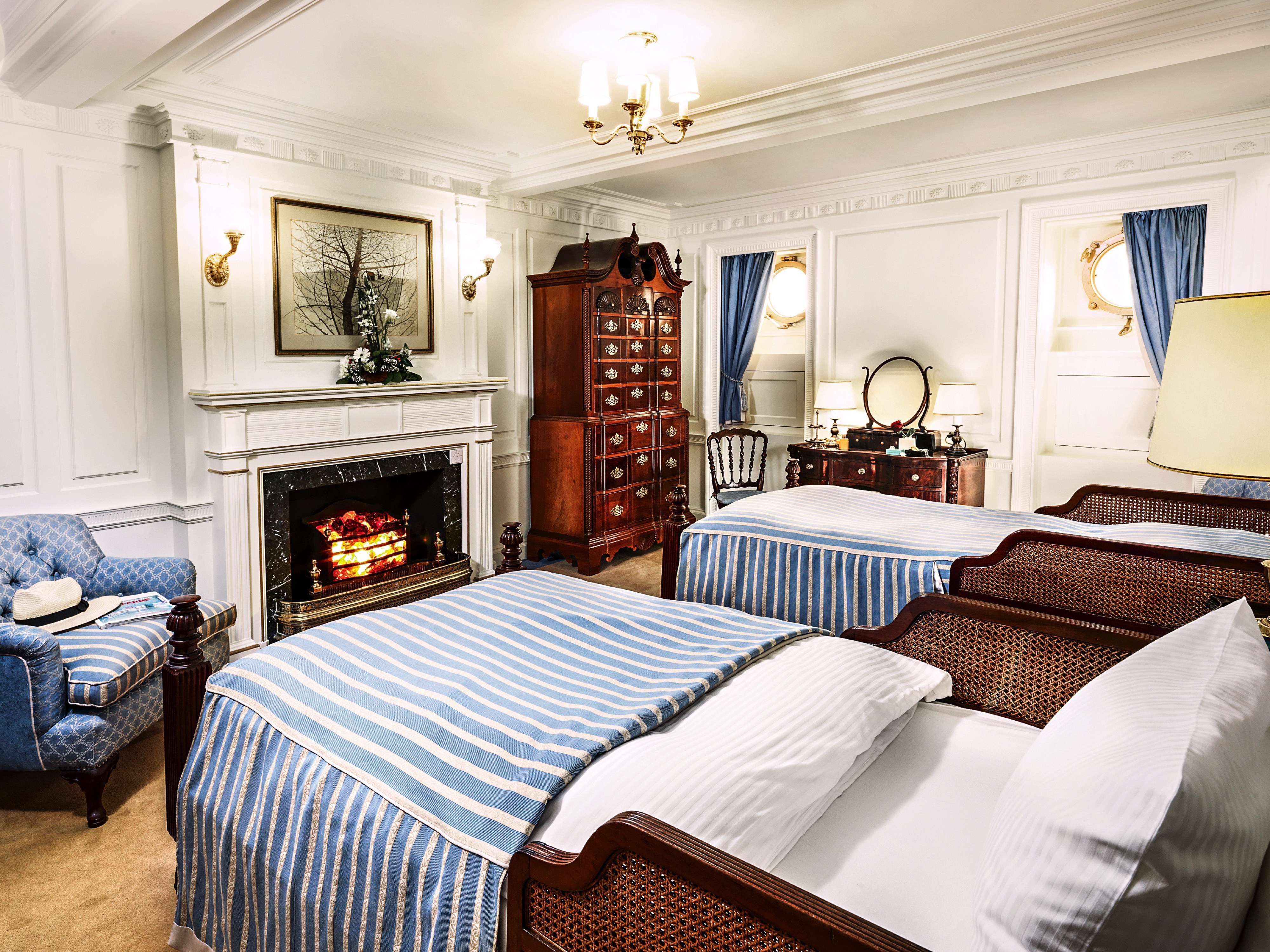
Cabin 3 – The original guestrooms reflected the generous hospitality of the Huttons. Each of these cabins was individually designed with carefully selected furniture and precious materials. The original colonial-style cabin no. 3 with its comfort is a testimony to this tradition. Famous personalities from the nobility, business and show business have already bedded their heads in this and the other spacious original cabins.
Cabin 4 – During the construction period of the SEA CLOUD in Kiel and later, when Marjorie already lived on board, she collected precious antiques all over the world. The original cabin No. 4 is one of the many examples of how skillfully she integrated the valuable pieces into the interior of her private yacht.
Cabin 5 – Marjorie’s declared goal was to make her family and her guests feel at home every minute on board the SEA CLOUD. Accordingly, she has designed the rooms like this de luxe original cabin to be spacious and comfortable. Spacious antique mahogany chests of drawers, marble in the bathroom and by the fireplace and antique unique pieces spread a cosy elegance.
Cabin 6 – Every vacation on the SEA CLOUD is also a journey through time. As in all original cabins, in this de luxe cabin you will feel transported back to the time of the elegant world customer of the 1930s. The selected antique mahogany furniture is small and delicate. Thanks to the color selection of the fabrics, the room has an extremely warm, sunny and light atmosphere.
Cabin 7 – As the first owner, Marjorie also furnished the SEA CLOUD with so much love for detail because she wanted to offer her daughter Dina Merrill a wonderful and safe home on board. This is especially noticeable in cabin no. 7: here Dina spent a large part of her childhood. The furniture made of fine maple has mahogany inlays. The unusual floor plan with the sloping fireplace makes the cabin appear even larger.
Cabin 8 – The original guestrooms reflected the generous hospitality of the Huttons and still contain the soul of the SEA CLOUD. Cabin no. 8 is a fine example for the character of the exclusive private yacht as which the ship was designed from the very beginning.
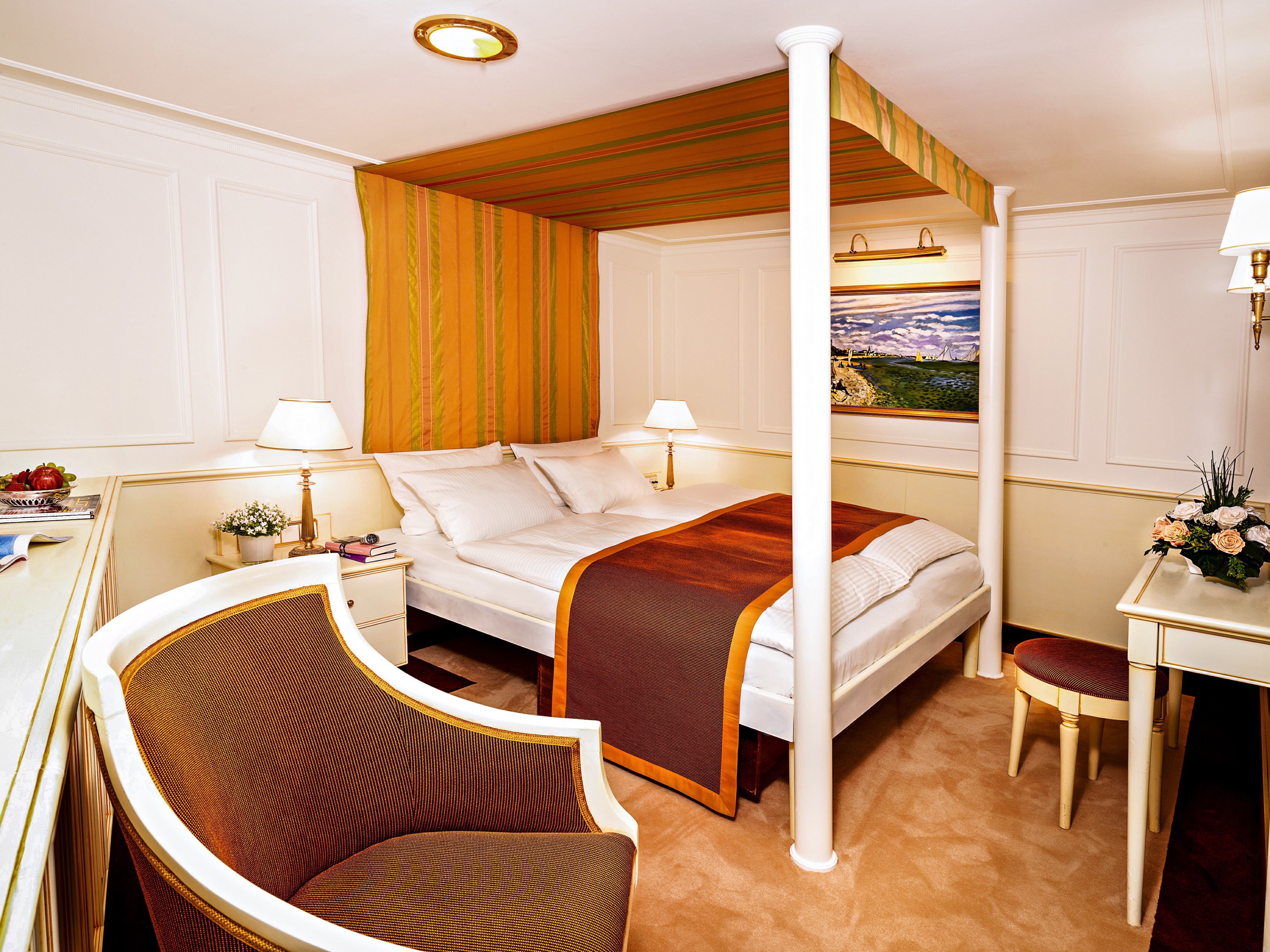
Cabins 9 and 10 are located in the original area on the main deck. Both rooms were redesigned into large De-Luxe outside cabins. The design is based on historical models with a modern accentuation and is kept in warm fabrics and wood tones. Both cabins are located at the end of the original area and are connected to the promenade deck by a separate staircase.
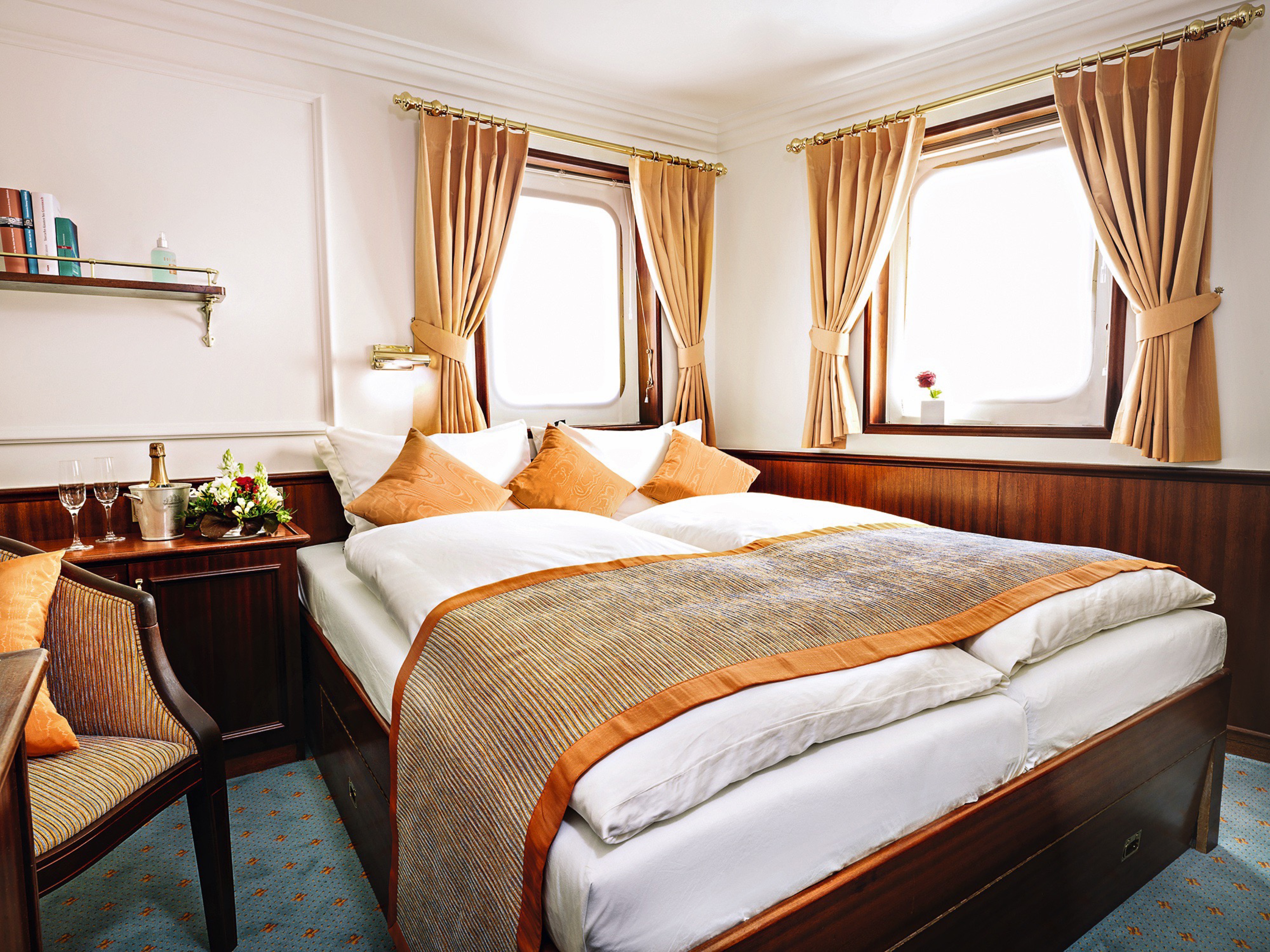
Like all the cabins on the captain’s and lidodeck, these two rooms were only built in the late 1970’s and offer a great deal of comfort. Their outstanding feature is the panoramic windows placed over the corners, which make the overall impression bright and friendly.

Even though the cabins on the captain’s and lidodeck were harmoniously integrated into the SEA CLOUD only later, they naturally follow the standards set in the original area. Their tasteful interior design is a contemporary interpretation of the interior designed by Marjorie Merriweather in the 1930s. The comfortable interior corresponds with the wonderful view of the wide sea.
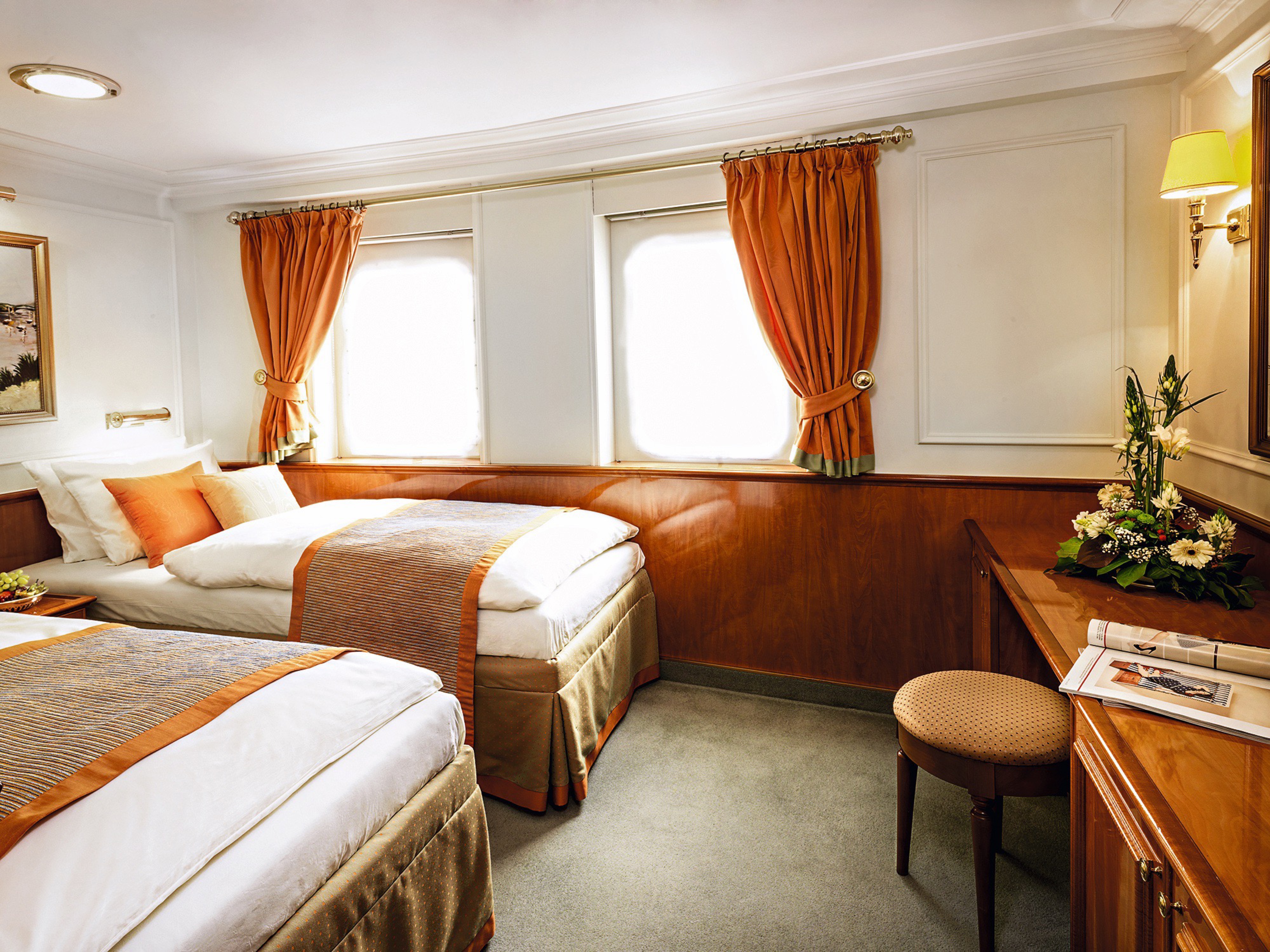
These comfortable cabins have a special maritime charm due to their location between the manoeuvring stations for hoisting and lowering the sails. The deckhouse, which was added during the renovation of the SEA CLOUD, is an oasis of peace, but due to its location on the promenade deck, the cabins are also only one step away from the restaurant and lounge in the superstructure amidships.
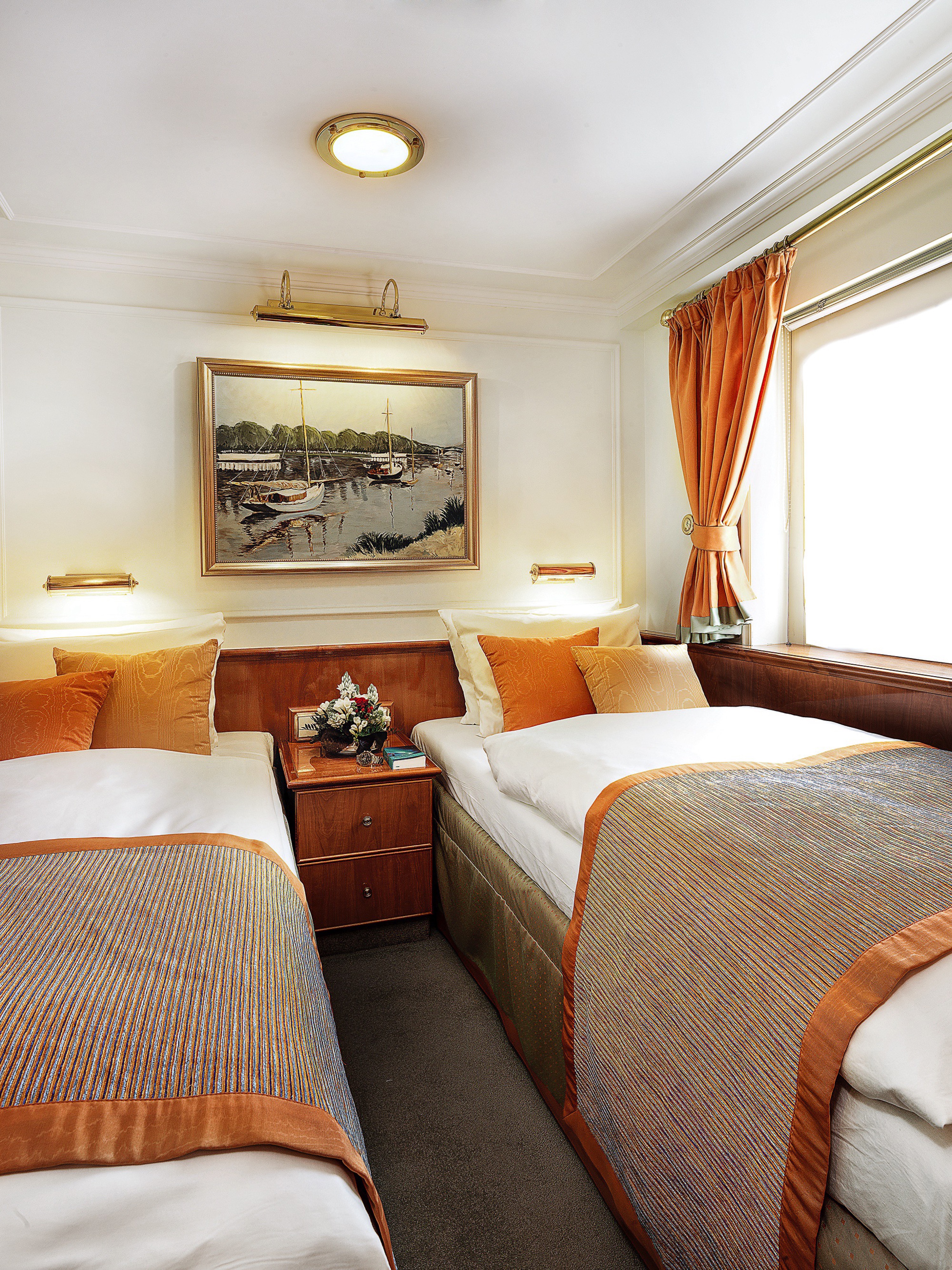
In addition to the comfort and luxury that characterize the SEA CLOUD, both cabins offer a special feature: the most charming place on the tall ship – the so-called Blue Lagoon – can be reached directly from them. The semi-circular, blue cushions that give the ship its name are the traditional place on board for relaxing sunbathing or – at night – for a dreamy view of the impressive starry sky above the ocean.
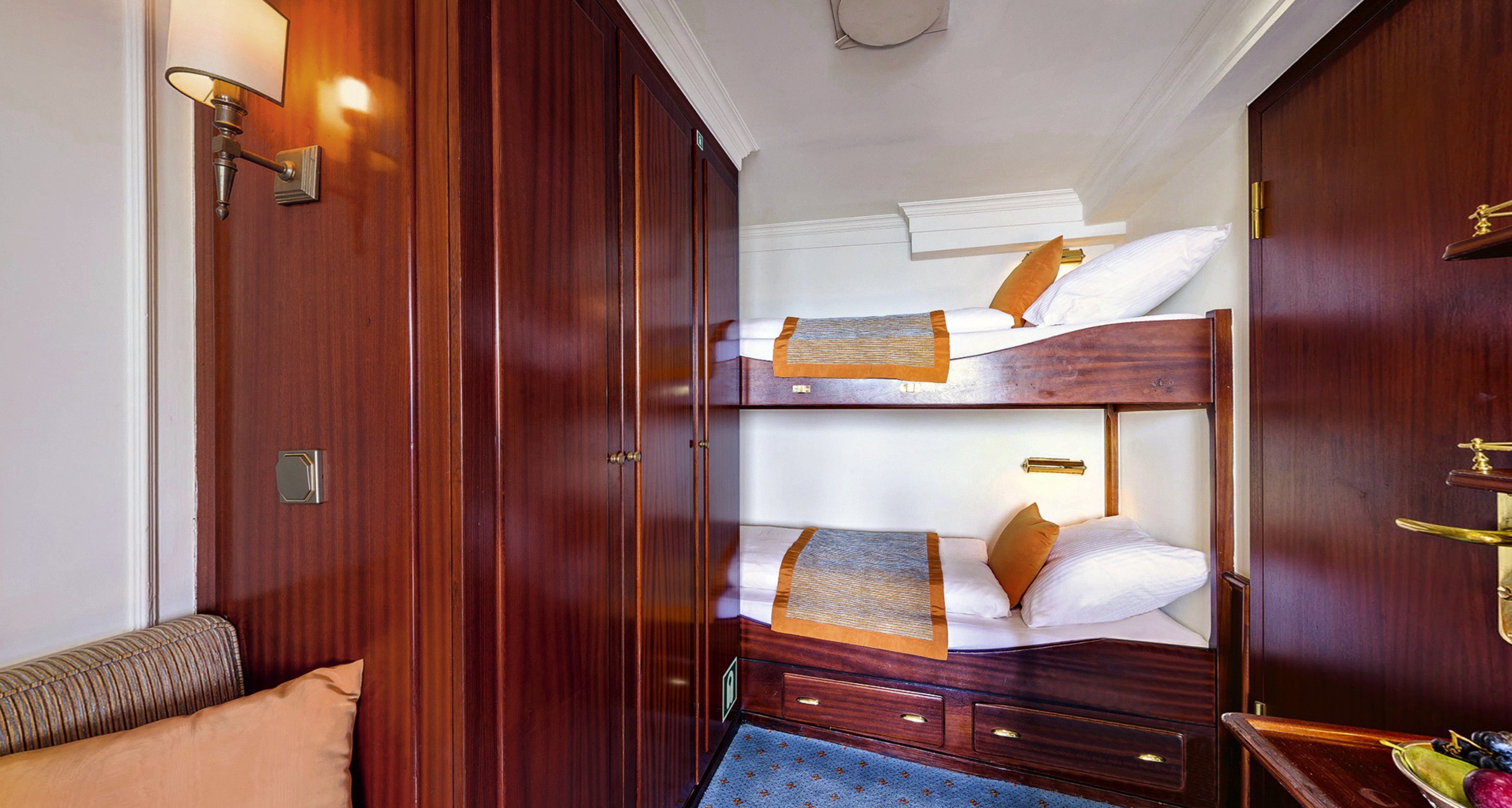
These cabins are the right place for sailing enthusiasts. In Marjorie’s time, the officers of the SEA CLOUD were accommodated here. Their furnishings are correspondingly nautical. The clou: The doors of the cabins below the bridge deck lead directly to the promenade deck, so that at night you can sleep in the perfect maritime ambience with open doors and fresh air.

Guaranteed double cabins: The range of accommodation starts from Cat. 5. You will receive your exact cabin number when arriving on board. The allotment for this category is very limited.
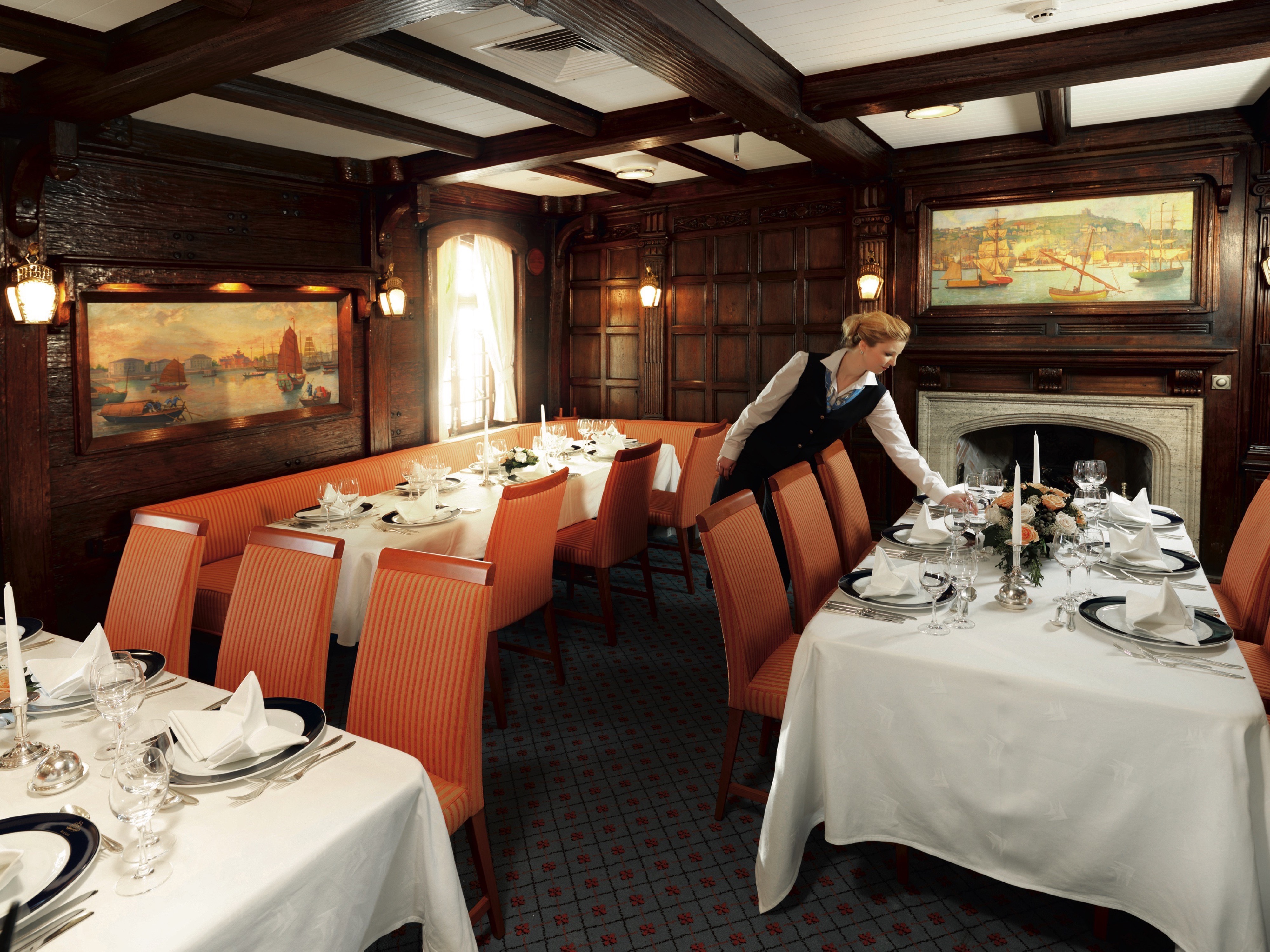
Sea Cloud’s dining room is panelled in warm woods and hung with original oil paintings. It is on the Promenade Deck, in Sea Cloud’s former salon, where Marjorie Merriweather Post received her guests. The chefs come from renowned, first-class restaurants, and offer fresh, contemporary cuisine inflected with regional flavours. They use fresh ingredients sourced locally, from sustainable providers whenever possible. By adding local flavours to a menu that also includes traditional favourites, the chefs aim to give you a greater sense of the cuisine and culture in the region you’re exploring. An array of fresh fruits and delicious, fresh juices are key components of the breakfast buffet. Wines from well-known regions are served with lunch and dinner, and are included in the expedition price. There are fish or meat choices at every meal.
There’s no assigned seating in the dining room; in fact, many tables accommodate uneven numbers. This makes for easy mingling and the fun of sharing breakfast, lunch, or dinner with different new friends, or staff. And independent travellers can count on a welcome everywhere they turn.
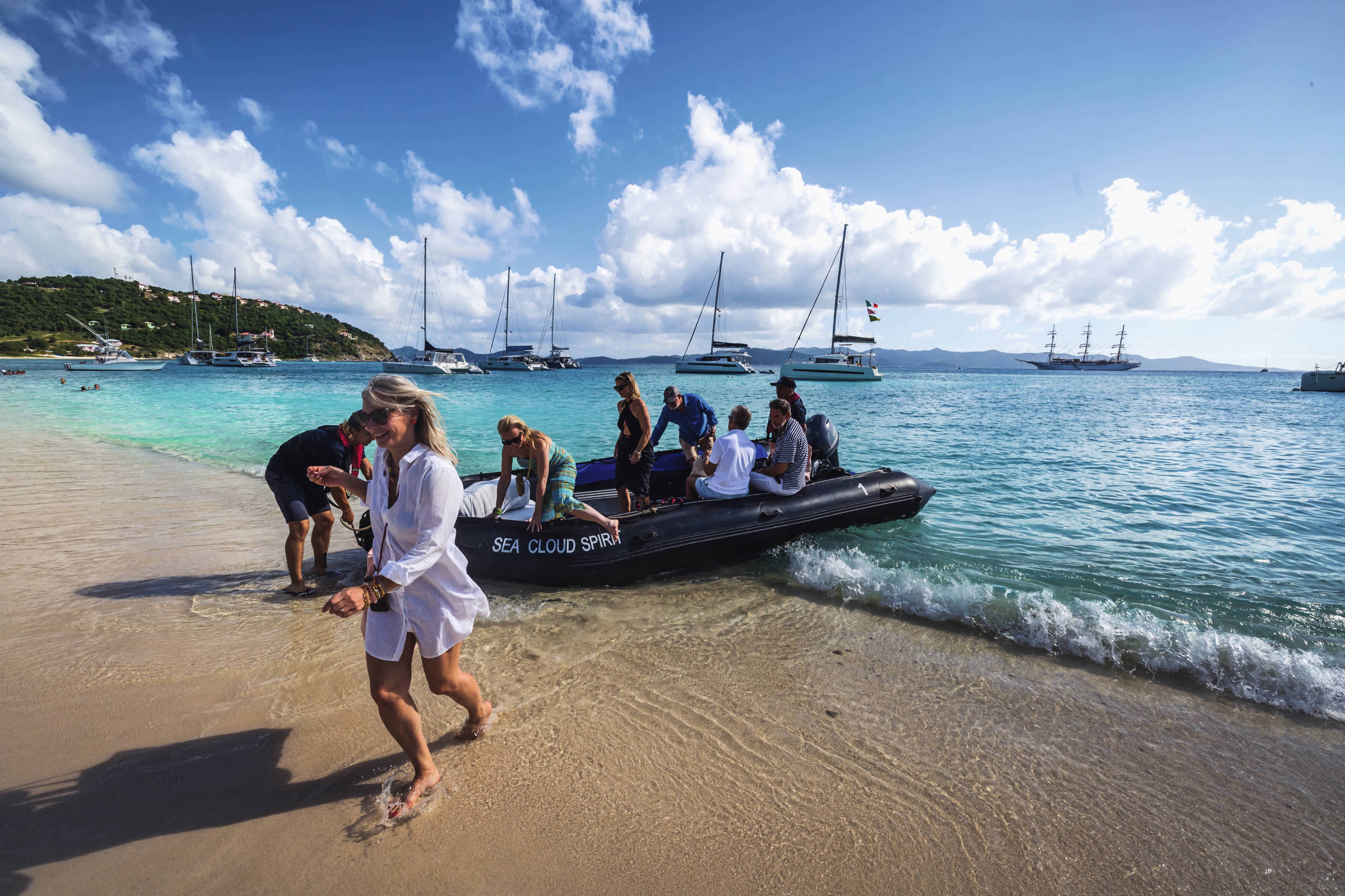
Smaller ships, greater possibilities
Among the many joys of travelling smaller: a quick spin on a zodiac, enjoying the beach barbeques in secluded bays, photo safaris, pausing for a dip in the azure sea. And on selected tours, some exclusive experiences are included – a private concert, an opera house or a palace tour, a culinary visit to a special vineyard, or a front-row seat at a legendary regatta.

Dive in and be active
Whether you want to start your swim directly from the ship or explore the colorful world on the reef – water sports are even more fun under the Caribbean sun. Equipment is available for everyone: Snorkels, fins and stand-up paddles are waiting for you. If you are in the mood for even greater action, let yourself be glided across the crystal clear waters by tubing in the Caribbean.

Selected picture books, high-quality literature, popular board games and a writing desk with a laptop can all be found in the cosy lounge on the promenade deck.
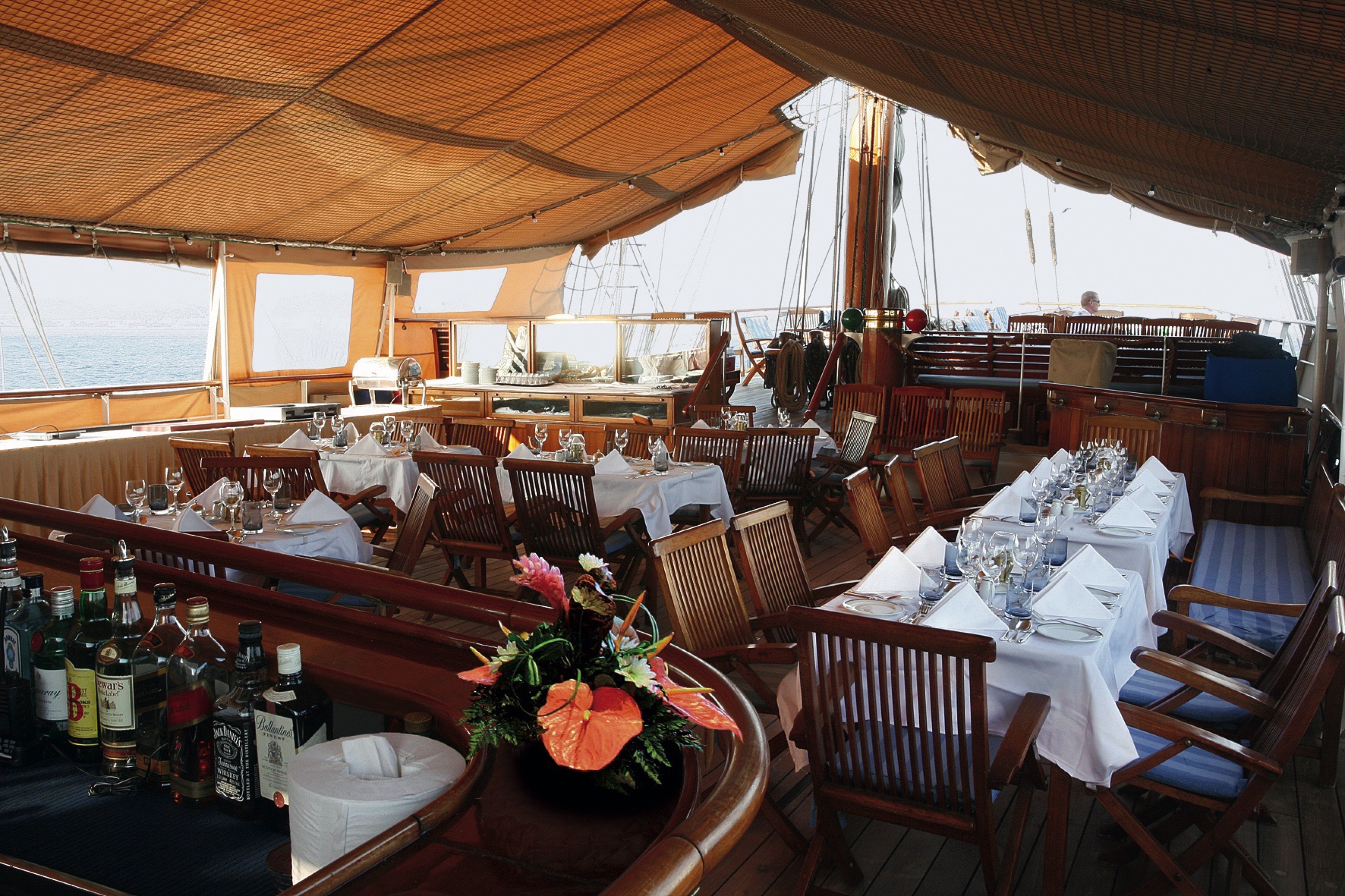
If the weather is fine, you might like to sit on the lido deck at lunch time. The tasty snacks served at the buffet in the open air will both whet and satisfy your appetite. At certain times, our onboard pianist will provide pleasant background music to your conversations. The lido bar is a cosy place to wind down the evening. Quite befitting for any traditional sailing ship, the atmosphere can also get rather vibrant when the Crew Shanty Choir makes an appearance.
Not only is the promenade deck a quick route from one end of the ship to the other; in good weather, you will also find some very tasty refreshments there. The coffee, tea and light snacks are ideal for those who rise early, but also to provide sustenance in the afternoon between meals. Just imagine a freshly made waffle with ice cream under the white sails of a ship – that really is pure paradise!
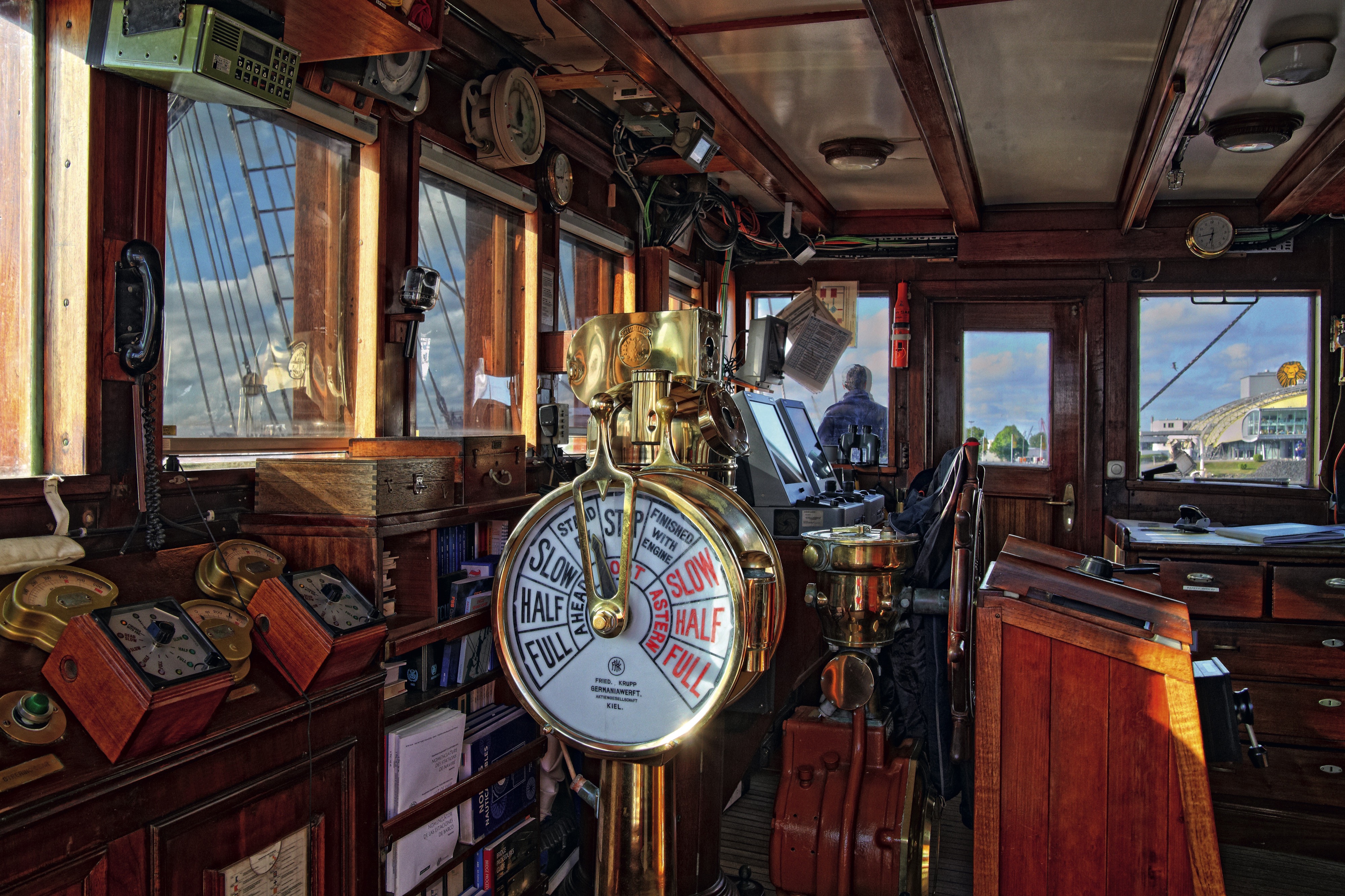
Excellent views of the sea and the 30 majestic sails can of course be enjoyed from the SEA CLOUD’s bridge, where a range of historic nautical instruments almost conceal the modern technology. Operational circumstances permitting, the officers on the bridge will also be happy to answer questions about “their” sailing ship.
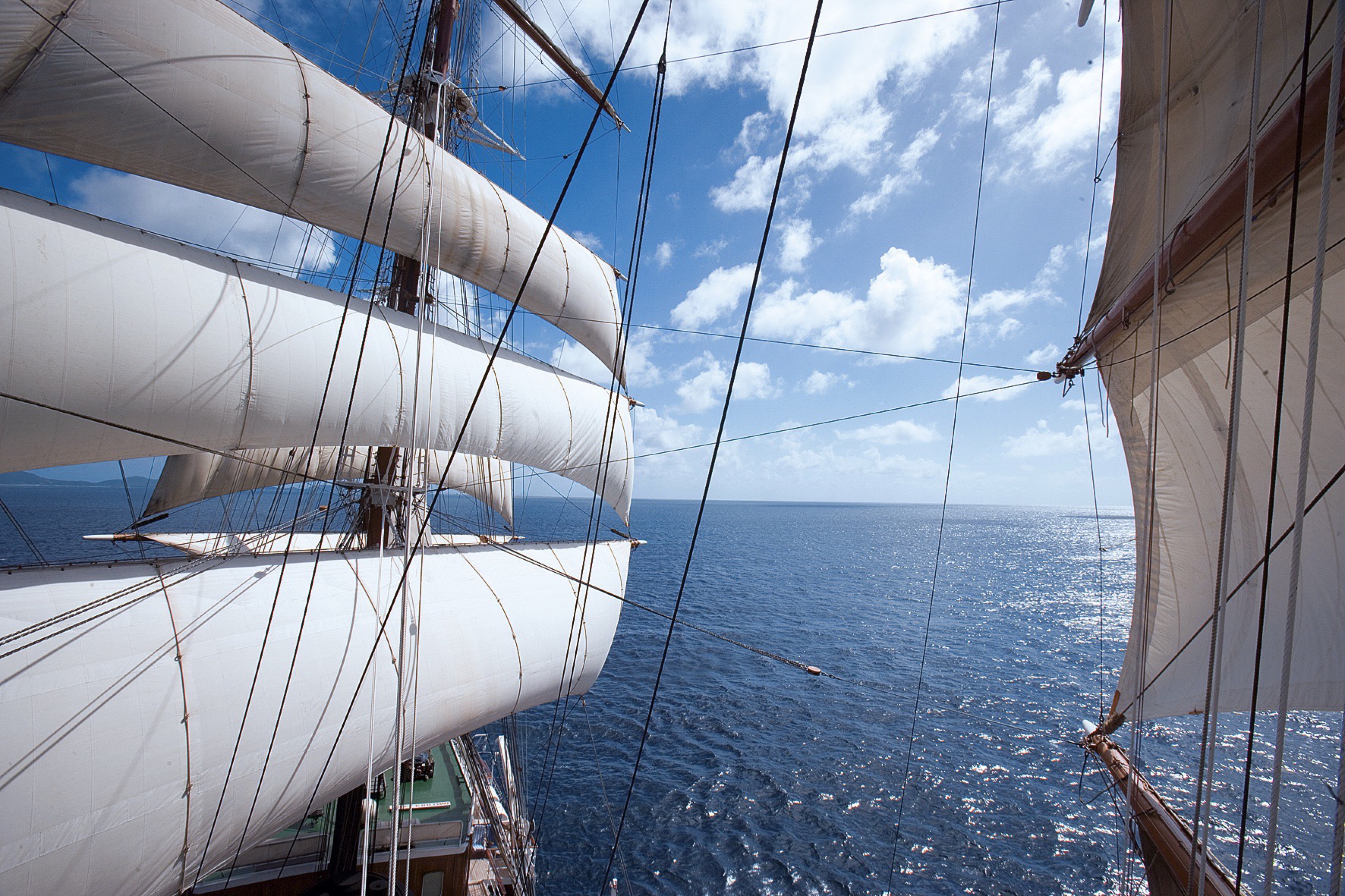
On board the SEA CLOUD there are many wonderful spots where you can relax and unwind: from countless deckchairs, to elegant mahogany benches and the blue lagoon, where you can gaze up at the masts. Watching the movement of the sails and all the traditional tasks associated with a majestic sailing ship is one of the most wonderful activities on the high seas. The traditional rules of cruise travel might be thrown overboard; on board the SEA CLOUD you can travel the way you prefer. If you like, you can jog around the outer promenade deck or borrow snorkelling equipment for a trip ashore. The SEA CLOUD’s onboard zodiac boats do not just take you ashore and back but are also used to tow “Fun Island”, our inflatable water sled. And when conditions are calm enough, the gangway becomes a direct access point for the most beautiful swimming pool in the world: the sea.
The chef will happily accommodate special diet requests—please let us know about any requests in advance so that we may prepare.
During the day, and depending on the weather, a sophisticated summer look is suitable. For the evening, we recommend smart-casual wear. We also kindly request that guests refrain from wearing shorts at evening meals. The Captain’s Dinner (an event which normally takes place twice on each trip – once on short cruises) is a time when our guests tend to opt for a more elegant look. We recommend a suit for men and appropriate smart dress for women. Please remember to take some non-slip shoes with you.
Our tall ships SEA CLOUD and SEA CLOUD II are not accessible for all people with disabilities and are not suitable for wheelchair users. Please contact our cruise consultancy for further details.
Smoking is permitted only on the outer decks outside of meal times. We kindly request that smokers take the comfort of other passengers into consideration. Smoking is prohibited on the blue lagoon deck and covered areas of the spanker and lido deck at all times.
A laptop is available for use on board in the lounge (SEA CLOUD) or in the library (SEA CLOUD II). You can use this laptop or your own laptop to connect to the internet (Wi-Fi) using the access code, however please note that there is a charge for this. The code can be obtained from reception or the purser.
Laundry services available on board are limited to washing and ironing. There is no dry-cleaning available. The washing and ironing service is provided at an additional charge and is carried out overnight. For guests with bookings in Cat. A-C (SEA CLOUD) or Cat. A+B (SEA CLOUD II), this service is free of charge. For safety reasons, passengers are not permitted to iron in their cabins.
Children are of course very welcome on our ships, however there is no supervision or entertainment available for children.
We approach the people and their cultures with respect in all the regions we visit, travelling mindfully through the local environment. By doing this, we can bring our guests closer – in the truest sense of the word – to these places, and what makes each one special.
THE WINDJAMMER EXPERIENCE
For you and us alike, the key attraction of our trips is the chance to sail on the open seas.
We therefore take every opportunity to set sail and be propelled by the sheer power of the wind. That is why the captain will sometimes change the route if the weather requires it. On board our SEA CLOUD tall ships, you’ll experience the elements, as many of the day-to-day activities take place outside.
HAVING AS LITTLE IMPACT AS POSSIBLE
When we do have to start the engines, we utilise low-sulphur marine diesel on all three of our windjammers.
For us, this is standard practice. Even the SEA CLOUD, our very first windjammer, was equipped with this technology right from the start. Our motto: to minimise our impact on the environment yet still make a profound and positive impression on those around us.
A SUSTAINABLE APPROACH TO LIFE ON-BOARD
Avoiding plastic, reducing water usage and protecting the environment.
These are the factors that guide us in the day to day operation of our ships and our ongoing development of eco-friendly alternatives. To cite just one example, our reusable drinks bottles are not only easy on the eye, but also easy on the environment.
QUALITY, NOT QUANTITY
Our ‘small but perfectly formed’ windjammers are able to visit smaller ports, away from the busy routes frequented by large cruise liners.
With a maximum of 64 to 136 passengers, we’re always welcomed in those locations thanks to our approach of visiting local communities rather than overwhelming them. Needless to say, our itineraries also include some classic destinations, though we usually visit these only when the mega-liners have moved on.
BOOSTING THE LOCAL ECONOMY
Procuring supplies locally, working with local, smaller-scale agencies and paying fair prices.
By taking this approach, we see ourselves as a partner for our local service providers, with whom we’ve built relationships based on trust over many years. After all, we want our voyages to benefit both our guests and the communities we visit around the world.
AUTHENTIC CUISINE
Our menus are always a true reflection of the regional cuisine.
This is because our chefs enjoy buying exotic spices, local specialities and freshly caught fish from local markets to bring you – even in a culinary sense – closer to the places we visit.
A MEMBER OF THE FUTOURIS NETWORK
Heading into the future with Futouris.
Preserving the natural and cultural heritage of our world and shaping the future of tourism in a sustainable way is what Futouris stands for. Members of the network are working globally to improve people’s living conditions, preserve biodiversity and protect the environment and climate.
All three ships have a hospital, which is supervised by a ship’s doctor. Medical consultation hours can be found in the daily program. In case of an emergency, the doctor can be reached at any time by calling 911.

- Bridge
- Lido Bar
- Lido Deck
- Spanker Deck
- Category 1 Cabins (Double Bed Cabins)
- Category 2 Cabins (Twin Bed Cabins)

- Purser
- Hospital
- Restaurant
- Lounge
- Category 3 Cabins (Twin-Bed Cabins)
- Category 4 Cabins (Twin-Bed Cabins)
- Category 5 Cabins (Upper-/Lower-Bed)

- Deluxe Category A Cabins (Luxury Owner’s Cabins)
- Deluxe Category B Cabins (De Luxe Original Cabins)
- Deluxe Category C Cabins (De Luxe Outside Cabins)

